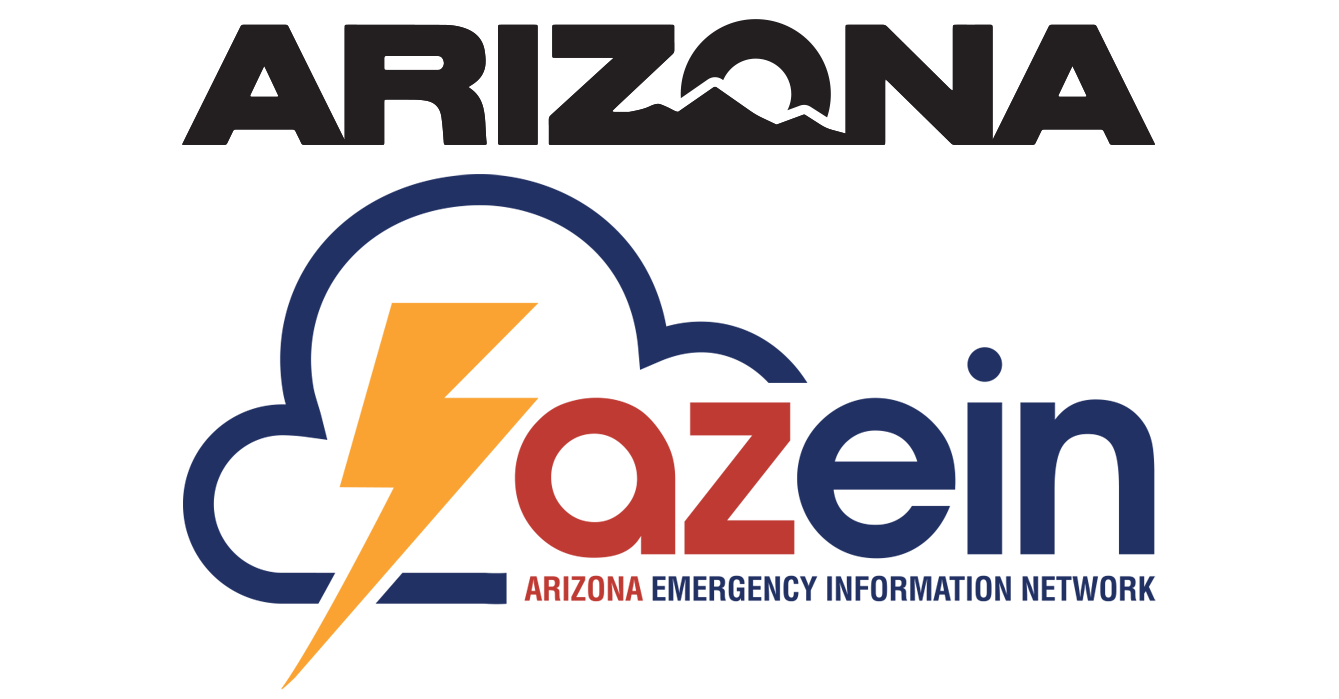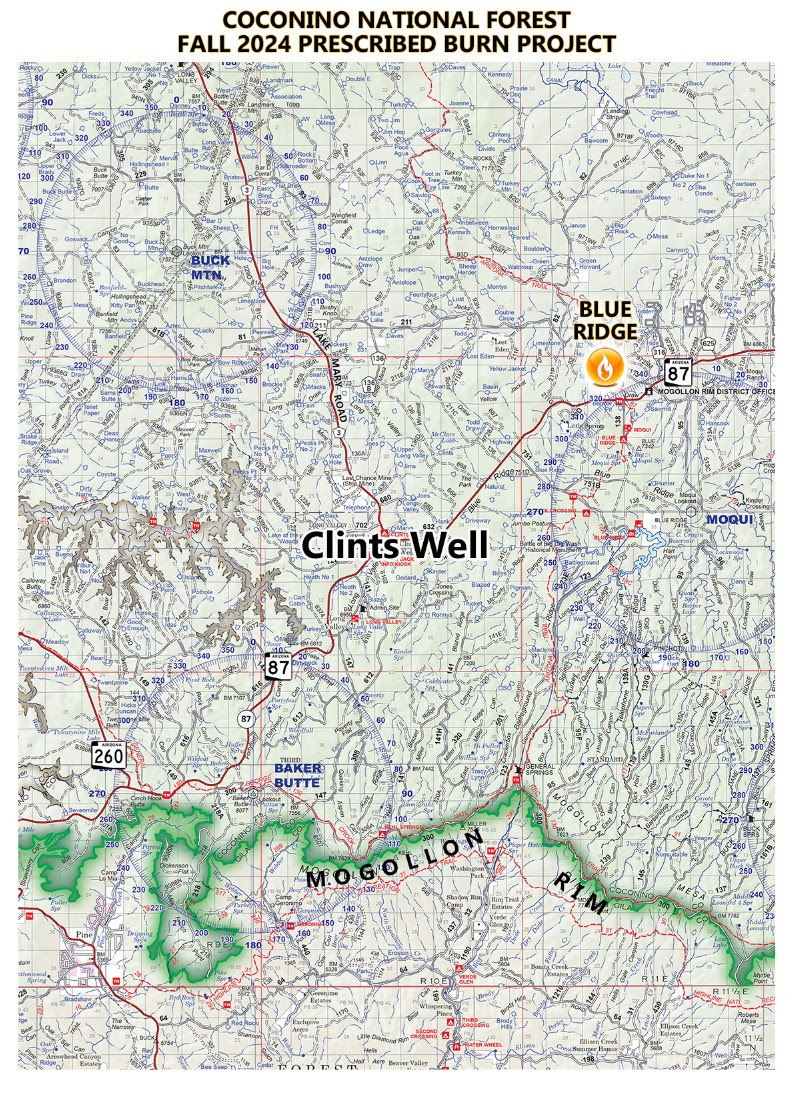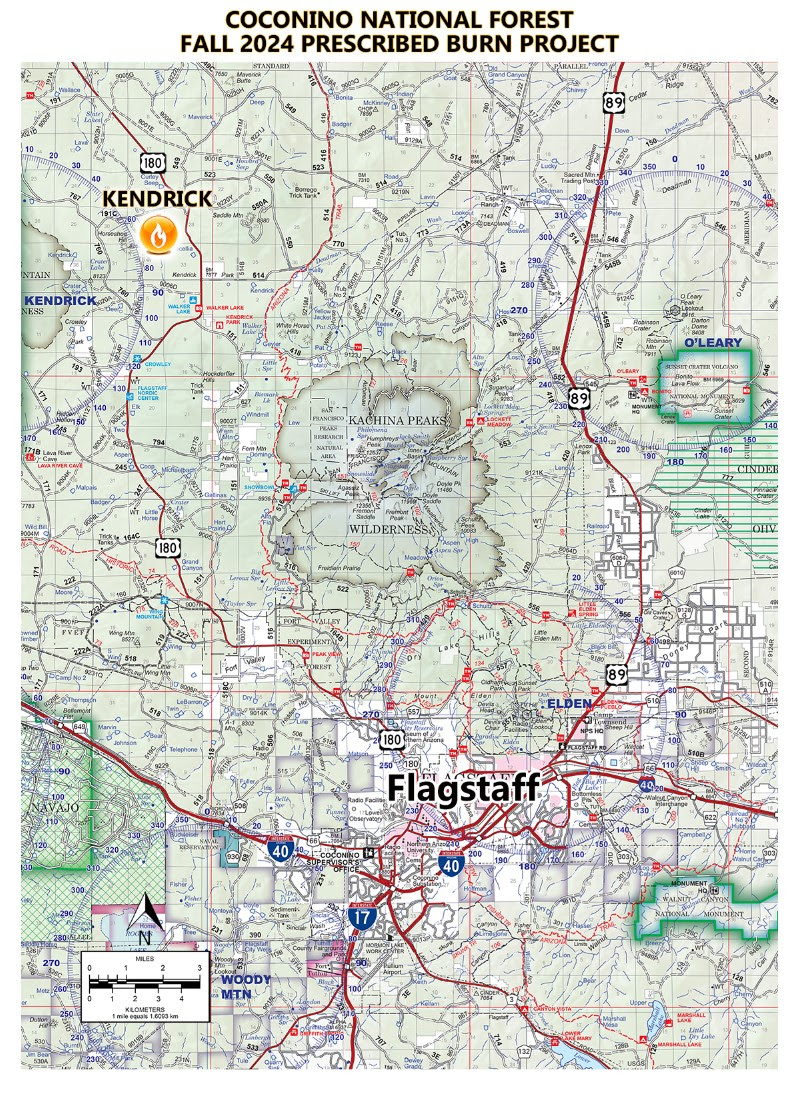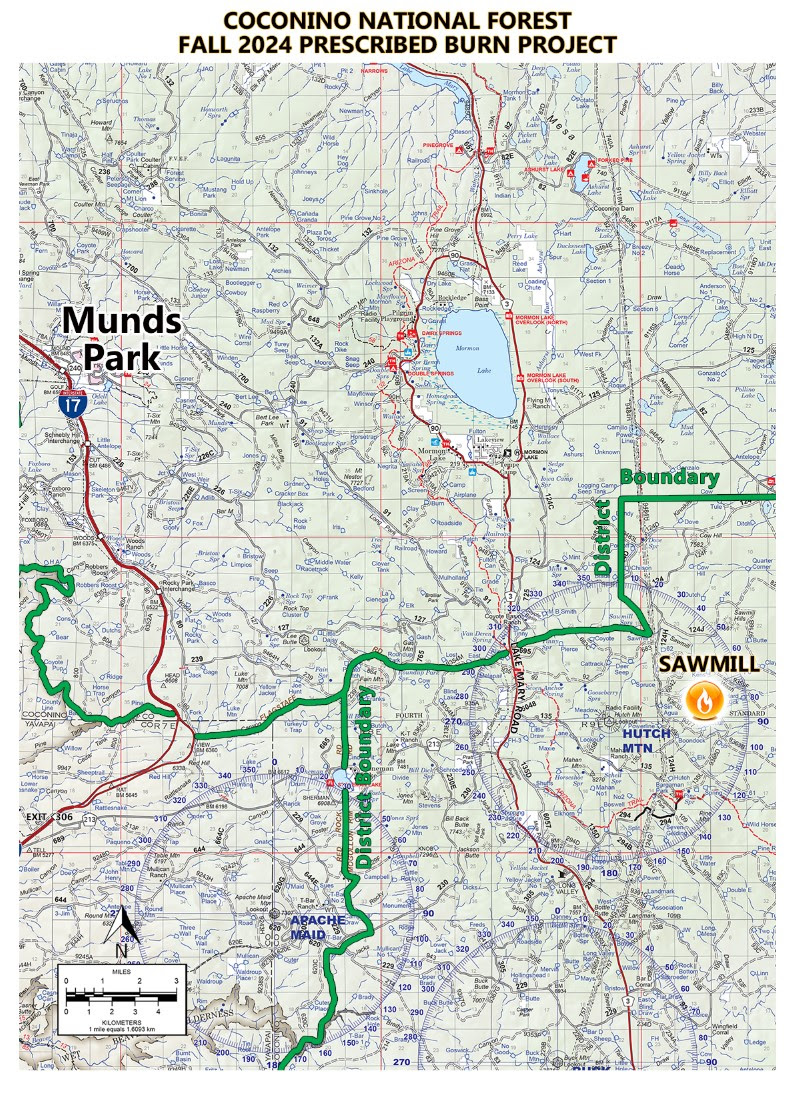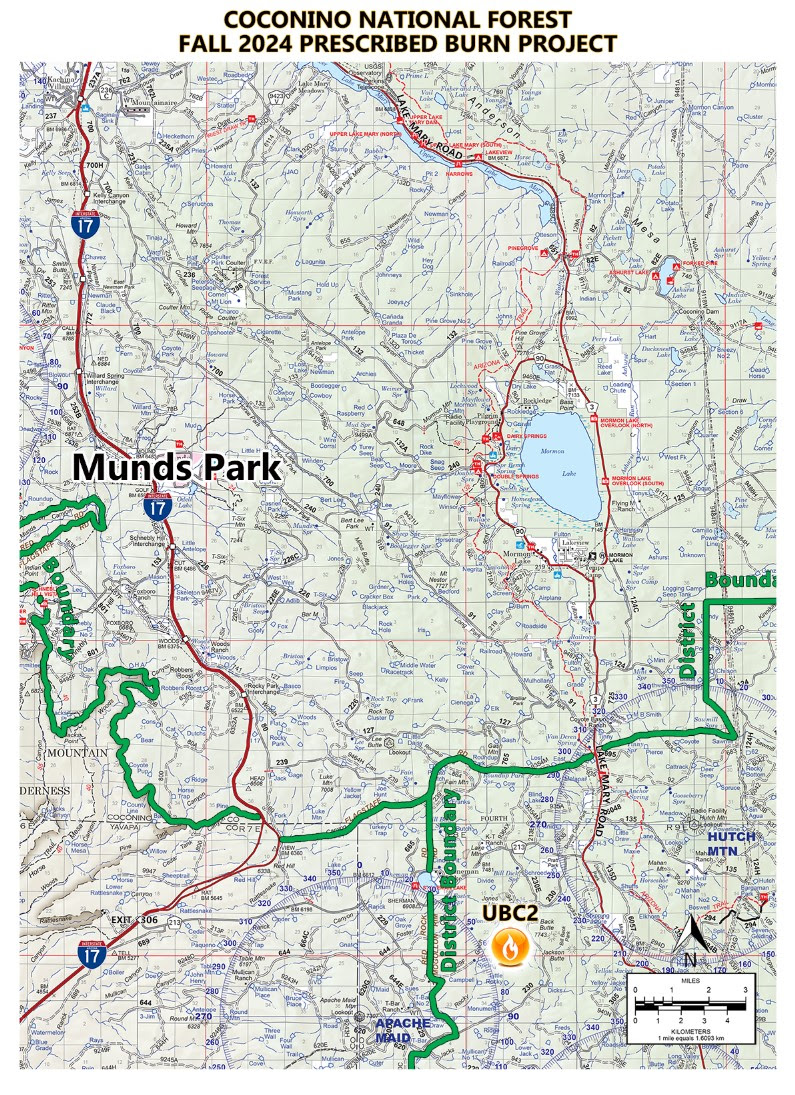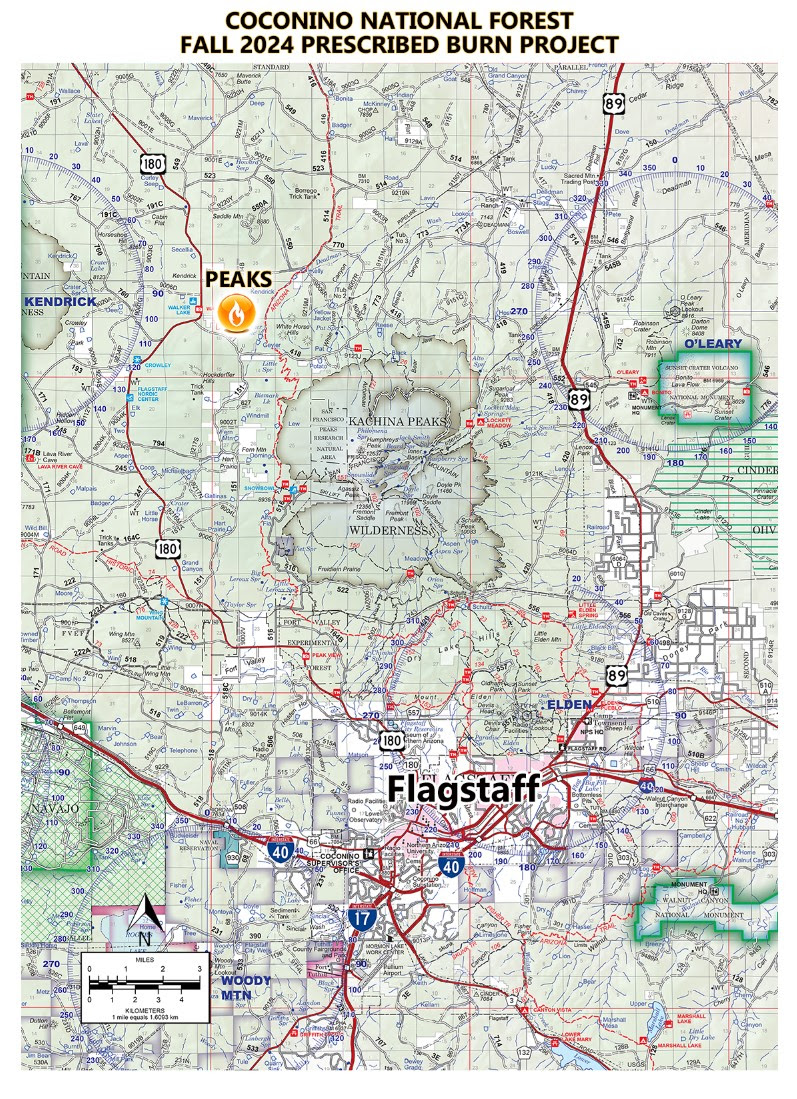Prescribed burns planned on Coconino National Forest the week of Oct. 7
The Coconino National Forest plans to continue work on several prescribed burn projects this week that will help restore healthier conditions to the fire-adapted ponderosa pine forests of northern Arizona.
Prescribed burns will be canceled if weather conditions – such as temperature, wind or humidity – do not meet the criteria outlined in the burn plans.
Blue Ridge Urban Interface
When: Ongoing since Oct. 2
Where: Located on the Mogollon Rim Ranger District, roughly 9 miles northeast of Clints Well. A project map is available online.
Why: This prescribed burn will reduce fuel loading around the communities of Blue Ridge, thus lessening the risk of catastrophic unplanned wildfire during times of critical fire weather. This project also reintroduces fire into a fire-adapted ecosystem.
Size: 7,000 acres
Method/Type of Burn: Broadcast maintenance burn.
Duration: This project began on Oct. 2 and is anticipated to last a total of roughly three weeks. Ignitions will occur sporadically during the project timeline.
Smoke Impacts: Smoke is expected to travel to the north and northeast and will be highly noticeable from nearby areas such as Jack’s Canyon, Little Springs Canyon and on state Route 87.
Closures/Restrictions: No formal closure orders will be issued, but Arizona Trail hikers will be asked to follow a posted re-route to avoid hazardous areas.
Kendrick/ Horseshoe
Date: Oct. 8
Duration: 2 days
Location: 17.5 miles northwest of Flagstaff near Kendrick Park.
Size: 3,471 acres total (comprised of four sections/blocks).
Type of burn: Maintenance, broadcast burn. Maintenance burns usually mean wildfire has recently been through the area, which tends to mean less smoke since forest fuels will not be as thick or built up over time. Broadcast burning means firefighters will spread the fire across the landscape using drip torches, effectively 'broadcasting' the fire with low intensity across the landscape.
Smoke impacts: Smoke is expected to disperse to the northeast and will impact U.S. Route 180 with possible light impacts to Doney Park and moderate impacts to Kendrick Park overnight. As the burn continues, smoke along Route 180 is expected to decrease as firing moves further to the west. Moderate to heavy smoke impacts can be expected overnight on Route 180 during the burn as smoke settles.
Why: This prescribed burn will reduce fuel loading in areas west of Kendrick Park, thus lessening the risk of catastrophic unplanned wildfire during times of critical fire weather and very windy conditions, which is common in the Kendrick Park area. This also helps keep extreme wildfire from possibly moving onto the San Francisco Peaks as well as reintroduces fire into a fire-adapted ecosystem.
Notes: There are no closures expected with this burn.
Sawmill
Tentative date: Oct. 9
Duration: This burn will run intermittently through November 22.
Location: 19.5 miles east/southeast of Munds Park.
Size: 2,581 acres total (comprised of two sections/blocks).
Type of burn: Initial entry, broadcast burn. Initial entry burns mean fire has not been on the landscape any time recently, which results in a buildup of forest fuels such as pinecones, pine needles, dead and down trees, etc. This will result in thicker smoke when compared to a maintenance burn due to the density of forest fuels being burned. Broadcast burning means firefighters will spread the fire across the landscape using drip torches, effectively 'broadcasting' the fire with low intensity across the landscape.
Smoke impacts: No major smoke impacts are expected. Smoke will settle in flat areas north and east of the burn. However, smoke may be noticed from Interstate 40, Twin Arrows and Winslow.
Why: This project will reduce hazardous fuel loading and return fire to a fire-adapted ecosystem.
Notes: It is unlikely that firing operations will occur on the Sawmill project prior to Oct. 21. However, fire managers may shift operations from a different project to Sawmill to reduce smoke impacts on the Verde Valley.
UBC (Upper Beaver Creek) 2
Tentative date: Oct. 9
Duration: Through Nov. 22.
Location: 16 miles southeast of Munds Park, near Stoneman Lake.
Size: 16,406 acres total (comprised of eight sections/blocks).
Type of burn: Initial entry, broadcast burn. Initial entry burns mean fire has not been on the landscape any time recently, which results in a buildup of forest fuels such as pinecones, pine needles, dead and down trees, etc. This will result in thicker smoke when compared to a maintenance burn due to the density of forest fuels being burned. Broadcast burning means firefighters will spread the fire across the landscape using drip torches, effectively 'broadcasting' the fire with low intensity across the landscape.
Smoke impacts: Smoke is expected to travel to the north and east and will potentially impact Lake Mary Road. Smoke will likely drain west toward the Verde Valley and Interstate 17.
Why: This prescribed burn will reduce hazardous fuels such as downed trees and decaying plant matter in the project area. It will also return fire to a fire-adapted ecosystem.
Notes: There are no closures anticipated with this project.
Peaks (Horseshoe)
Tentative date: Oct. 10 or Oct. 11
Duration: One to three days.
Location: 15 miles north/northwest of Flagstaff, just south of Kendrick Park.
Size: 1,050 acres total (comprised of two sections/blocks).
Type of burn: Maintenance, broadcast burn. Maintenance burns usually mean wildfire has recently been through the area, which tends to mean less smoke since forest fuels will not be as thick or built up over time. Broadcast burning means firefighters will spread the fire across the landscape using drip torches, effectively 'broadcasting' the fire with low intensity across the landscape.
Smoke impacts: Smoke will be highly noticeable from the Flagstaff area. There will be possible smoke impacts to U.S. Route 180 and the communities in and around Kendrick Park.
Why: This fire will reduce heavy dead and down fuels leftover from the 1996 Hochderffer Fire. It will also work to safeguard the Kendrick Park communities from future unwanted catastrophic wildfire.
Notes: There are no planned closures associated with this project.
Prescribed burn information can always be accessed in several ways:
- Via InciWeb at inciweb.wildfire.gov. All projects will be detailed on the “Coconino National Forest 2024 Fall Prescribed Burn Season – AZCOF” page.
- On Twitter at @CoconinoNF
- On Facebook - search "U.S. Forest Service - Coconino National Forest"
- Via news releases. Subscribe to Coconino National Forest news releases by visiting coconinonationalforest.us, and then clicking the "Get News Via Email" link under the "Stay Connected" header
Prescribed burns are always dependent upon weather and wind conditions, as well as approval from Arizona Department of Environmental Quality (ADEQ). The public can view approved prescribed burns on ADEQ’s website at smoke.azdeq.gov. Coconino NF burns begin with the designator “COF.”
During prescribed burns, smoke will be visible from several areas across the forest. Please refrain from contacting dispatch or 911 to report prescribed burn smoke so lines can remain open for emergencies.
The Forest Service’s 10-year Wildfire Crisis Strategy aims to increase prescribed burning and other treatments across the landscape to improve forest resiliency for generations to come. With that work comes more smoke which can have an impact on both the public and our responders.
We recognize that smoke impacts can affect residents and visitors in addition to our fire personnel. We will continue to coordinate closely with partners and communities to keep people informed about projects and potential smoke. Affected communities can learn more at airnow.gov.
Prior to conducting prescribed burns, the Coconino NF follows steps outlined in the agency-wide National Prescribed Fire Review. These steps include items such as validating and updating prescribed burn plans with the most recent science and modeling, incorporating new drought monitoring data, ensuring the patrol plan and long-term patrol strategy is documented and communicating with and involving landowners, cooperators, elected officials and partners as we implement prescribed fires.
Prescribed burns are an important part of maintaining forest health. For more information on why prescribed burns are conducted and how they benefit the landscape and help protect communities, please visit our Prescribed Fire and Forest Health webpage.
